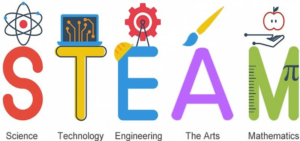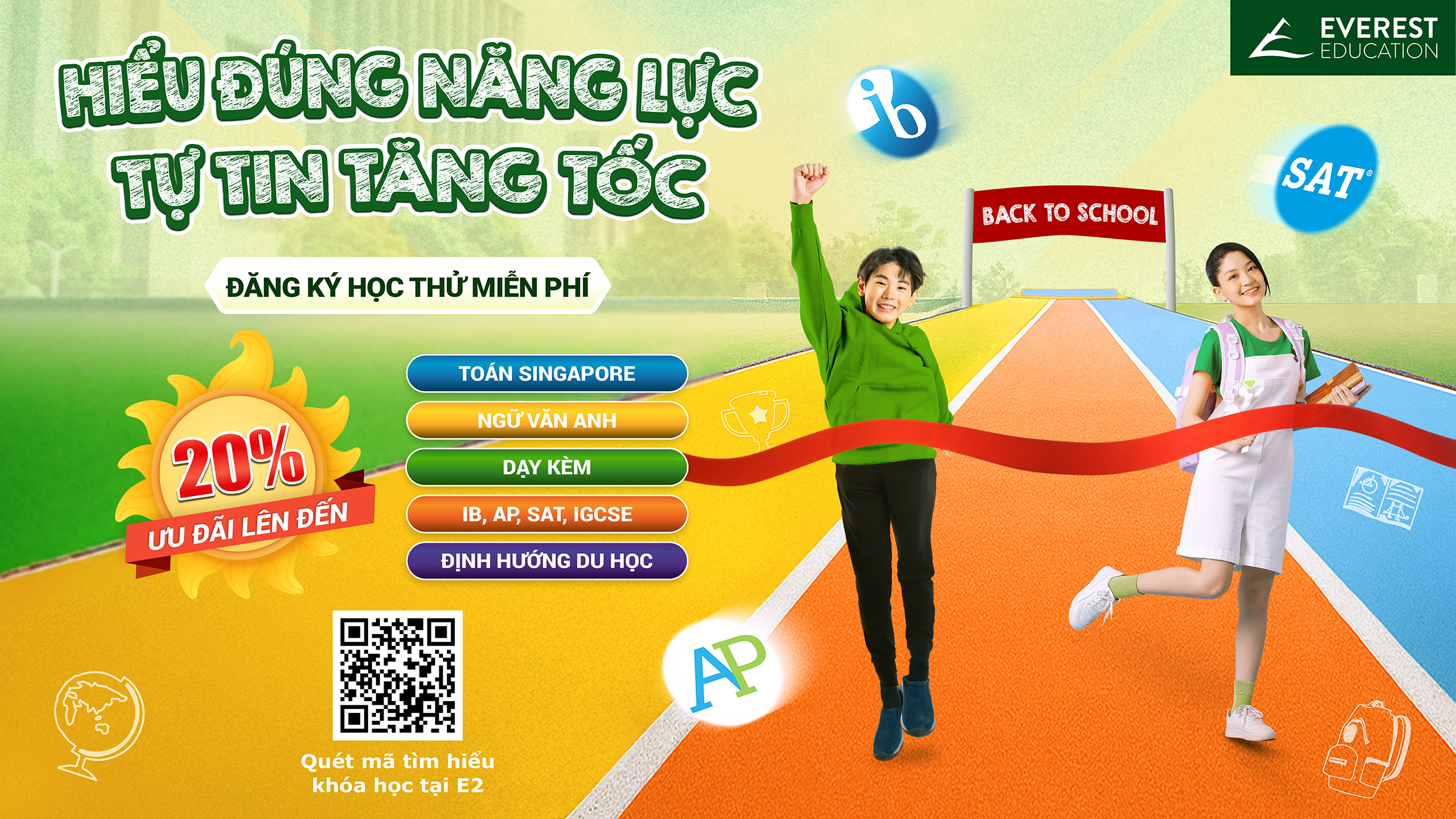What Is STEAM?
STEAM is the abbreviation for Science, Technology, Engineering, Art & Math. It’s an integrated approach to teaching and learning that integrates science, technology, engineering, the arts, and math as pathways to guide student inquiry, discussions, and critical thinking.
STEAM education, currently introduced to individuals during their college years, is set up to teach students how to think critically, enabling them to problem solve effectively and use creative thinking to drive forward and complete projects using new methods, tried and tested solutions and using their initiatives.
Education experts say STEAM education helps students develop the capacity to:
- Take thoughtful risks
- Engage in meaningful learning activities
- Become resilient problem solvers
- Embrace and appreciate the collaboration
- Work through the creative process
What we love about STEAM is that, unlike traditional education, the STEAM approach empowers students to be curious learners who seek creative solutions to real-world problems. These are the hard skills they need to succeed in college, their careers, and wherever else life takes them.
For example, students in our Virtual Summer Camp get to learn about life in outer space and demonstrate what they would need to live on another planet if the Earth ran out of rooms and resources. Throughout the course, students consider life essentials, housing, and safety through the lens of collaboration and compassion, all while being empowered to lead their learning.
5 reasons why Vietnamese students need to learn STEAM now!
While the STEAM movement is still relatively new in Vietnam, it’s gaining more and more attention. According to The Washington Post, STEAM promotes “skills seen as important in academic and life success.”
1. STEAM Learning Leads to Fascinating STEAM Career Paths
 According to one estimate from the World Economic Forum, almost two-thirds of today’s kindergarten students will eventually have occupations that don’t currently exist. A report from the U.S. Bureau of Labor Statistics projects growth in STEM and STEAM-related careers of 8% between now and 2029, compared to 3.4% for non-STEM occupations.
According to one estimate from the World Economic Forum, almost two-thirds of today’s kindergarten students will eventually have occupations that don’t currently exist. A report from the U.S. Bureau of Labor Statistics projects growth in STEM and STEAM-related careers of 8% between now and 2029, compared to 3.4% for non-STEM occupations.
What’s more, each year, 3.2 million STEAM/STEM-related jobs go unfilled because no one is qualified to fill them. Therefore, whether your child is interested in hard science, technology, engineering and math, STEAM curricula can lead to incredible opportunities for students of all ages and personalities.
Even for students who don’t choose a career in one of the STEM/STEAM fields, students’ skills from a STEAM education can be translated into almost any career. According to the McKinsey Global Institute, a demand for higher cognitive skills, such as creativity, critical thinking, decision making, and complex information processing, will grow by 19% by 2030. This is true of present-day jobs that already require a high degree of education and skill. A healthcare professional, for example, whose primary education is focused on biological sciences, will now need to learn how to think creatively and critically to adapt to a more technologically integrated health care system. In this field alone, the development of 3D preoperative imaging, highly advanced surgical robotics and AI deep-learning screening technologies are changing how doctors, nurses, surgeons and clinicians interact with their professions.
>>> Discover more potential career options in our previous article of Top 10 most in-demand jobs in the future and beyond.
2. STEAM Teaches Our Children to be Critical Thinker and Problem Solvers
STEM education doesn’t only help students who plan to go into STEM careers. The focus on logical thought processes and problem-solving allow students to develop mental habits that will help them succeed in any field.
While technical knowledge is a requirement in many industries, creative, think-outside-the-box problem-solving remains one of the most sought-after skills within the job market. Creativity might seem like a skill that comes naturally to specific individuals, but it’s one that a well-rounded STEAM education can foster. The lack of rigidly defined rules encourages young learners to demonstrate adaptive critical thinking, think around a given problem, and consider the effects produced by changing different variables. Students ask themselves, “How do I design a solution to fit the problem best?”
STEM coursework challenges students to think critically and come up with their solutions. As a result, students who receive a quality STEM education are primed to become the next generation of innovators. According to the U.S. Department of Education, “In an ever-changing, increasingly complex world, it’s more important than ever that our nation’s youth are prepared to bring knowledge and skills to solve problems, make sense of information, and know-how to gather and evaluate evidence to make decisions.” Enhancing such skills lies at the heart of STEAM education.
3. STEAM Gives All Students Hands-on Learning Experiences
While some students grow up in homes where they are taught how to build and fix things, others aren’t exposed to these significant learning opportunities. STEAM projects, especially in technology and engineering courses, often involve hands-on projects. Building a simple robot, engine, or computer program often involves multiple completed steps over several days. Students are constantly using different materials and tools to discover how something works, build it, and fix it.
In STEM education, students learn how to manage their time and break larger projects into smaller steps. That’s a skill that will help them throughout their lives, whether working on an office project or doing a home remodel.

4. STEM Classes Provide Unique Opportunities for Teamwork
 Teamwork is one of the most underrated and important drivers of success. Living and working in the modern world usually requires some degree of collaboration, often with a large and diverse group of people. STEAM classes often involve more team activities than other coursework. Many STEAM projects involve teamwork and thoughtful dialogue in which students exchange ideas and discuss ways to problem-solve. Through these activities, students learn how to divide up responsibilities, compromise, listen to and encourage each other.
Teamwork is one of the most underrated and important drivers of success. Living and working in the modern world usually requires some degree of collaboration, often with a large and diverse group of people. STEAM classes often involve more team activities than other coursework. Many STEAM projects involve teamwork and thoughtful dialogue in which students exchange ideas and discuss ways to problem-solve. Through these activities, students learn how to divide up responsibilities, compromise, listen to and encourage each other.
STEAM education also encourages a collaborative spirit in the classroom rather than a competitive one. As students work on chemistry reactions together or learn to see the value in their classmate’s artistic expressions, they can learn how to cooperate and appreciate their peers. Whether students are working together on a lab investigation or collaborating on an engineering challenge, they actively develop the interpersonal and collaboration skills they will need later on.
5. Eliminate the Gender Gaps by Encouraging girls to explore STEAM fields
 Since girls and women are underrepresented in science, technology, engineering, and math, developing STEAM projects helps girls become familiar with these fields at an early age. Early exposure can increase their chances of exploring these fields further as they get older, and high-quality STEAM projects will still benefit boys as well so that all students can acquire these 21st-century skills.
Since girls and women are underrepresented in science, technology, engineering, and math, developing STEAM projects helps girls become familiar with these fields at an early age. Early exposure can increase their chances of exploring these fields further as they get older, and high-quality STEAM projects will still benefit boys as well so that all students can acquire these 21st-century skills.
How to Get Started with STEAM
Leonardo Da Vinci once said, “Study the science of art. Study the art of science.” So says author, futurist and business technology advisor Bernard Marr, writing in Forbes.com that STEAM education is essential to “prepare our kids for the fourth industrial revolution.” Though we cannot know right now what some jobs of the future will look like, “It makes sense to educate our children with the skills and capacity to think outside the box with creative solutions. This is something a STEAM education can effectively prepare them to do.”
So if you are interested in incorporating STEAM into your child’s education, why don’t we just start with Everest’s STEAM Virtual Camp?
 This summer, Everest Education offers Virtual Summer Camp for the first time – in the theme of “SPACE EXPLORER SQUAD.” Students will learn using English, Mathematics, STEAM, scientific research, and project development skills on this starfaring journey. These will be the students’ first steps in their adventure to reveal the truth of the universe through diverse activities: hands-on science, technology, engineering, art, and math in a 100% all-English environment. This summer, Everest Education offers Virtual Summer Camp for the first time – in the theme of “SPACE EXPLORER SQUAD.” Students will learn using English, Mathematics, STEAM, scientific research, and project development skills on this starfaring journey. These will be the students’ first steps in their adventure to reveal the truth of the universe through diverse activities: hands-on science, technology, engineering, art, and math in a 100% all-English environment.
Using the ClassIn platform (top 50 global ed-tech by GSV), Everest’s STEAM Virtual Summer Camp will not like any other meeting platform such as Zoom or Microsoft Teams, students can join live classes, group chats, play games, do quizzes and connect with like-minded friends using innovative learning tools. They can also do projects, make a presentation and receive a detailed report to learn their progress.
>>> Sign up here |
Reference:
The University of San Diego, Why STEAM is so Important to 21st Century Education
Matter and Form Education, Why is STEAM Learning So Important for the Future?
CMO Adobe, 15 Mind-Blowing Stats About The Future of Work
Forbes, We Need STEAM, Not STEM Education, To Prepare Our Kids For The 4th Industrial Revolution
Where learning meets joy
with friends and teachers who care









 According to one estimate from the
According to one estimate from the 
 Teamwork is one of the most underrated and important drivers of success. Living and working in the modern world usually requires some degree of collaboration, often with a large and diverse group of people. STEAM classes often involve more team activities than other coursework. Many STEAM projects involve teamwork and thoughtful dialogue in which students exchange ideas and discuss ways to problem-solve. Through these activities, students learn how to divide up responsibilities, compromise, listen to and encourage each other.
Teamwork is one of the most underrated and important drivers of success. Living and working in the modern world usually requires some degree of collaboration, often with a large and diverse group of people. STEAM classes often involve more team activities than other coursework. Many STEAM projects involve teamwork and thoughtful dialogue in which students exchange ideas and discuss ways to problem-solve. Through these activities, students learn how to divide up responsibilities, compromise, listen to and encourage each other.  Since girls and women are underrepresented in science, technology, engineering, and math, developing STEAM projects helps girls become familiar with these fields at an early age. Early exposure can increase their chances of exploring these fields further as they get older, and high-quality STEAM projects will still benefit boys as well so that all students can acquire these 21st-century skills.
Since girls and women are underrepresented in science, technology, engineering, and math, developing STEAM projects helps girls become familiar with these fields at an early age. Early exposure can increase their chances of exploring these fields further as they get older, and high-quality STEAM projects will still benefit boys as well so that all students can acquire these 21st-century skills. This summer,
This summer, 








